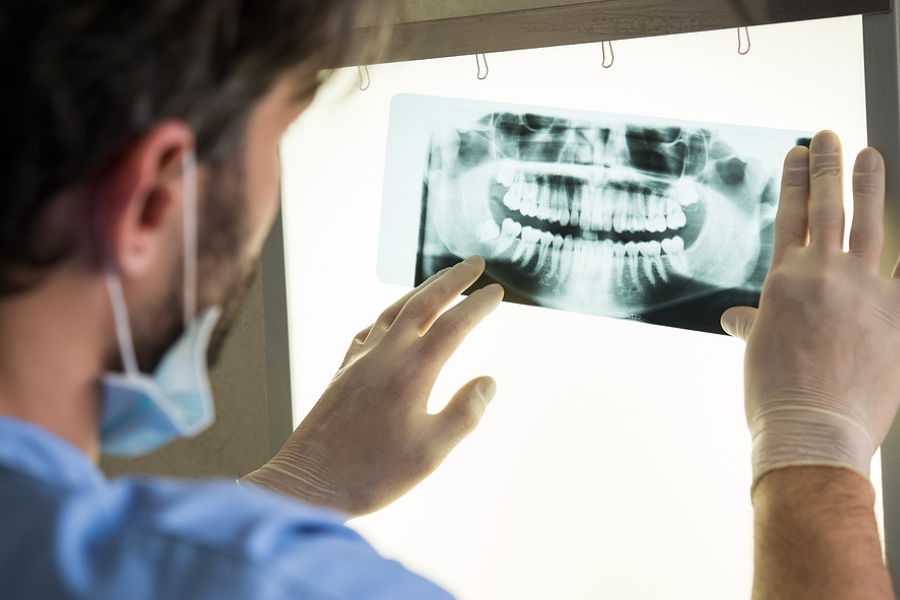How X-Rays Work: A Peek Inside The Body With Physics

X-rays are a fascinating application of physics that have revolutionised the medical field, allowing doctors to see inside the human body without surgery. These powerful imaging tools provide crucial insights into our health, aiding in diagnosing conditions ranging from broken bones to complex internal diseases.
In this article, we'll explore how X-rays work, delve into the underlying physics, and understand why they are essential in modern healthcare.
The science behind x-rays
Electromagnetic radiation, or X-rays, are comparable to visible light but have a far higher energy. They were discovered in 1895 by German physicist Wilhelm Conrad Roentgen, who noticed that certain rays could pass through solid objects, revealing what was inside. Unlike ordinary light, X-rays have a very short wavelength, allowing them to penetrate different materials, including human tissue.
When X-rays pass through the body, they are absorbed by various tissues at different rates. Softer tissues like muscles and organs absorb less X-rays and show in shades of grey on the resultant picture, whereas dense tissues like bones absorb more X-rays and look white. This contrast creates a detailed image of the internal structures of the body, enabling doctors to diagnose medical conditions accurately.
How x-ray machines work
X-ray machines consist of a tube that produces X-rays and a detector that captures the image. The process starts when a high voltage is applied to the tube, causing electrons to accelerate at high speeds towards a metal target, usually made of tungsten. When these high-speed electrons collide with the tungsten atoms, X-rays are emitted.
The emitted X-rays then pass through the patient's body and are captured on a detector, which can be a digital sensor or traditional film. The varying absorption rates of different tissues create a contrast image that highlights structures like bones, tissues, and any abnormalities. This process is almost instantaneous, providing quick and valuable information to medical professionals.
Applications of x-rays in medicine
X-rays are widely used in medicine for several purposes, making them an indispensable tool in diagnostics and treatment:
1. Diagnosing bone fractures: X-rays are commonly used to detect fractures and dislocations in bones. The high contrast between bones and soft tissues allows doctors to identify breaks, helping them decide on the best treatment approach.
2. Dental imaging: Dentists use X-rays to inspect teeth and jawbones, detecting cavities, impacted teeth, and other dental issues that are not visible during a routine examination.
3. Chest x-rays: These are used to examine the lungs, heart, and chest cavity, helping diagnose conditions like pneumonia, tuberculosis, and heart enlargement.
4. Mammography: A specialised form of X-ray used to screen for breast cancer, mammography can detect tumours at an early stage, improving treatment outcomes.
5. Fluoroscopy: This technique uses continuous X-ray imaging to observe real-time movement within the body, such as blood flow or the movement of contrast agents through the digestive tract.
Understanding the physics in x-rays
X-rays offer an excellent example of how fundamental physics principles are applied in everyday life. For students studying physics at a higher level, understanding the mechanics behind X-rays can provide a deeper appreciation of their power and limitations. Concepts like energy levels, electron acceleration, and electromagnetic radiation are all crucial components of JC Physics, making this topic an engaging way to relate classroom learning to real-world applications.
For those seeking to master these concepts, enrolling in JC Physics tuition or H2 Physics tuition in Singapore can be particularly beneficial. These specialised courses help students grasp complex ideas, such as the production and absorption of X-rays, through detailed explanations, practical examples, and the use of physics past year papers to reinforce learning.
Safety and precautions
While X-rays are incredibly useful, they do come with some risks due to their ionising nature, which can damage living tissues. Therefore, X-ray usage is carefully controlled to minimise exposure. Patients are often provided with lead aprons to protect sensitive parts of the body, and technicians operate the equipment from a shielded area.
Moreover, advancements in technology have significantly reduced the amount of radiation used in X-ray imaging, making the process much safer than in the past. Digital X-rays, in particular, use lower doses of radiation compared to traditional film-based methods.
The future of x-ray technology
With ongoing advancements in technology, the future of X-ray imaging looks even more promising. Innovations like 3D imaging, high-resolution digital sensors, and artificial intelligence-driven analysis are enhancing the accuracy and efficiency of X-ray diagnostics. These developments are making it easier to detect diseases at earlier stages and provide more personalised care to patients.
Conclusion
X-rays represent a remarkable intersection of physics and medicine, providing a non-invasive window into the human body. By harnessing the principles of electromagnetic radiation, X-rays have become a critical tool for diagnosis and treatment in modern healthcare. As technology continues to evolve, X-ray imaging will undoubtedly remain at the forefront of medical innovation, helping doctors and patients alike see beyond the surface.